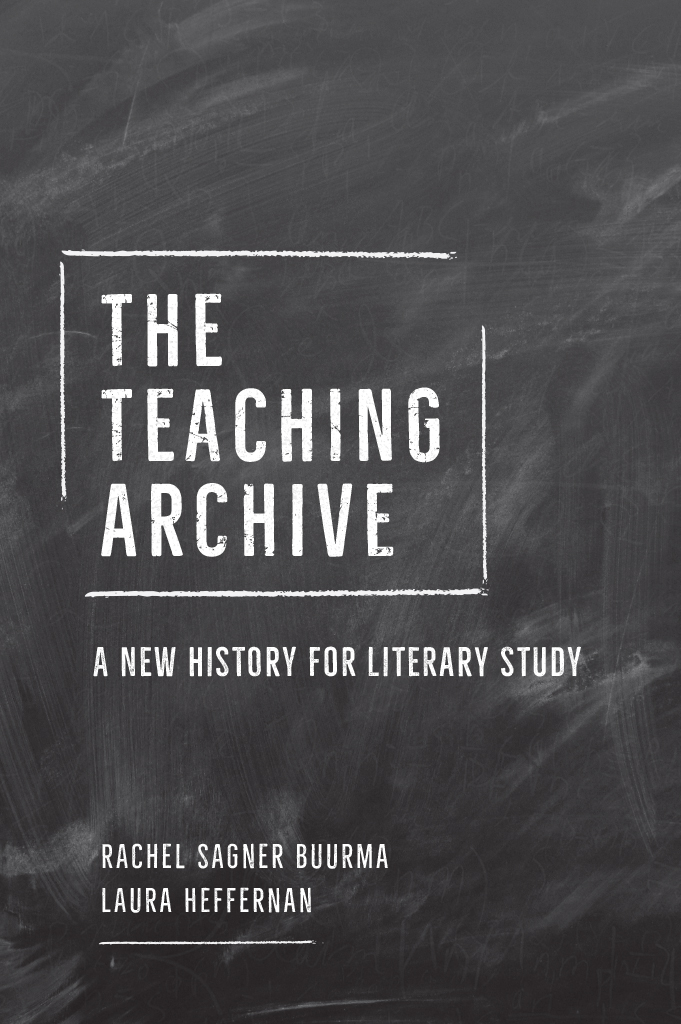
The Teaching Archive
The Teaching Archive
A NEW HISTORY FOR LITERARY STUDY
Rachel Sagner Buurma and Laura Heffernan
The University of Chicago Press
Chicago and London
The University of Chicago Press, Chicago 60637
The University of Chicago Press, Ltd., London
2021 by The University of Chicago
All rights reserved. No part of this book may be used or reproduced in any manner whatsoever without written permission, except in the case of brief quotations in critical articles and reviews. For more information, contact the University of Chicago Press, 1427 East 60th Street, Chicago, IL 60637.
Published 2021
Printed in the United States of America
30 29 28 27 26 25 24 23 22 21 1 2 3 4 5
ISBN-13: 978-0-226-73594-8 (cloth)
ISBN-13: 978-0-226-73613-6 (paper)
ISBN-13: 978-0-226-73627-3 (e-book)
DOI: https://doi.org/10.7208/chicago/9780226736273.001.0001
The University of Chicago Press gratefully acknowledges the generous support of the University of North Florida and Swarthmore College toward the publication of this book.
Library of Congress Cataloging-in-Publication Data
Names: Buurma, Rachel Sagner, author. | Heffernan, Laura, author.
Title: The teaching archive : a new history for literary study / Rachel Sagner Buurma and Laura Heffernan.
Description: Chicago : University of Chicago Press, 2021. | Includes bibliographical references and index.
Identifiers: LCCN 2020020789 | ISBN 9780226735948 (cloth) | ISBN 9780226736136 (paperback) | ISBN 9780226736273 (ebook)
Subjects: LCSH: English literatureStudy and teaching. | American literatureStudy and teaching.
Classification: LCC PR35 .B88 2020 | DDC 428.0071dc23
LC record available at https://lccn.loc.gov/2020020789
 This paper meets the requirements of ANSI / NISO Z39.48-1992 (Permanence of Paper).
This paper meets the requirements of ANSI / NISO Z39.48-1992 (Permanence of Paper).
Contents
Caroline Spurgeon, The Art of Reading (1913)
T. S. Eliot, Modern English Literature (191619)
I. A. Richards, Practical Criticism (1925), and Edith Rickert, Scientific Analysis of Style (1926)
J. Saunders Redding, The Negro in American Literature (1944) and American Biographical Literature (1976)
Cleanth Brooks, Modern Poetry (1963), and Edmund Wilson, Literature of the Civil War (1959)
Josephine Miles, English 1A (194055)
Simon J. Ortiz, Native American Arts (1978)
Caroline Spurgeons teaching notebooks (1880s1910s)
Caroline Spurgeons Art of Reading notes handout (1913)
Caroline Spurgeons Art of Reading rough index handout (1913)
Caroline Spurgeons Art of Reading final index handout (1913)
T. S. Eliots Modern English Literature third-year syllabus (1918)
I. A. Richardss Practical Criticism lecture notes (1925)
I. A. Richardss Practical Criticism Lecture V notes (1928)
I. A. Richardss Practical Criticism unattributed poems handout (1929)
Edith Rickerts New Methods for the Study of Literature Chart XIc (1927)
Edith Rickerts New Methods for the Study of Literature Chart XId (1927)
J. Saunders Reddings The Novel lecture notes (1954)
J. Saunders Reddings American Biographical Literature syllabus (1976)
Cleanth Brookss Contemporary Poetic Theory and Practice Yale Course Critique review (1963)
Cleanth Brookss Contemporary Poetic Theory and Practice lecture transcript comments (1962)
Edmund Wilsons The Historical Interpretation of Literature draft notes (1939)
Edmund Wilsons Use of Language in Literature handout (1958)
Josephine Miless English 1A book list (1941)
David Daichess plot diagrams for Virginia Woolfs Mrs. Dalloway (1939)
Josephine Miless Named Emotion in Wordsworth table (1942)
Josephine Miless tabulations of the major vocabulary of 1740s poets (1947)
Simon J. Ortizs Native American Arts syllabus (1977)
Simon J. Ortizs Native American Arts syllabus (1978)
We have written every line of this book together, and we have elected to list authorship alphabetically. This author order represents neither a hierarchy nor a division of labor.
A NEW SYLLABUS
In this book, you will see a series of major literary scholars in a place they are rarely remembered as inhabiting: the classroom. You will watch T. S. Eliot and his working-class students revise their tutorial syllabus in order to reimagine early modern drama as everyday literature written by working poets. You will follow Caroline Spurgeon, one of the first female professors in the UK, as she teaches her first-year womens college students to reconfigure the world of letters by compiling their own reading indexes. You will see I. A. Richards transform large lecture halls into experimental laboratories by enlisting his students as both test subjects and researchers in his poetry experiments. You will encounter Edith Rickert and her graduate students as they invent new methods of formal analysis for poetry and prose. You will watch J. Saunders Redding carefully compose his American literature syllabus so that the class would devote half of its time to Black writers. You will see Cleanth Brookss students ask him questions about the historical contexts of the poems they read, while Edmund Wilson teaches James Joyces newly available Ulysses alongside Shakespeare and Sterne to women undergraduates and local community members. You will follow poet Josephine Miles as she assigns freshman writing essays designed to get students to think about data rather than merely report it. And you will see how Simon J. Ortiz jettisons the traditional survey course in order to teach Native American literature to community college students.
Along with many others who populate this book, these figures measured out their professional lives by the academic year, the length of the term, and the lecture hour. Like countless other teachers and scholars, they workedsometimes with studentsin special collections archives, in computing laboratories, in private manuscript collections, in major research libraries, and at desks in studies or carrels. But mostly, they worked in classrooms. They worked in classrooms at Bedford College for Women, Southall Grammar School as part of the University of London extension program, the University of Chicago, Elizabeth City Teachers College, Hampton Institute, Smith College, Louisiana State University, George Washington University, Lincoln University, the University of Chicago, Yale University, Harvard University, the University of California, Berkeley, the Institute for American Indian Arts, the College of Marin, and the University of New Mexico. They taught classes of all female undergraduates; they taught working-class adult students; they taught hybrid courses open to undergraduates and the general public; they taught classrooms of high school English teachers; they taught upper-level English majors; they taught dentistry students, freshman composition students, and graduate students. Their classrooms were various: wood-paneled seminar rooms close by dormitories, decaying former gymnasiums a train ride from students homes, Quonset huts erected hastily during wartime, desk-lined rooms borrowed from elementary schools, communications studios, special collections large and small, and computing laboratories in friendly electrical engineering departments.
The true history of English literary study resides in classrooms like these; most of the study of literature that has happened in the university has happened in classrooms. Counted not just in hours and weeks, but in numbers of people, stacks of paper, and intensity of attention, the teaching of English literature has occupied a grand scale. More poems have been close-read in classrooms than in published articles, more literary texts have been cited on syllabuses than in scholarship, more scholarship has been read in preparation for teaching than in drafting monographs. Within institutions of secondary education large and small, numberless teachers and students have gathered to read both an astonishing number and an astonishing range of texts together. If it were possible to assemble the true, impossible teaching archiveall the syllabuses, handouts, reading lists, lecture notes, student papers, and exams ever madeit would constitute a much larger and more interesting record than the famous monographs and seminal articles that usually represent the history of literary study.
Next page
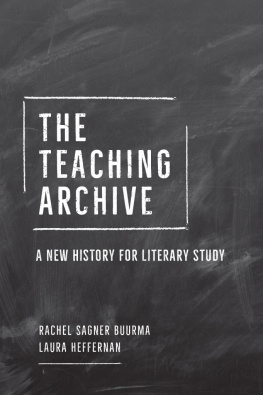
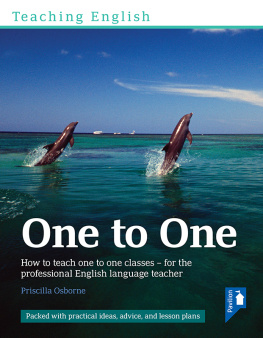
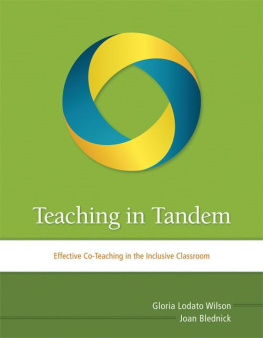

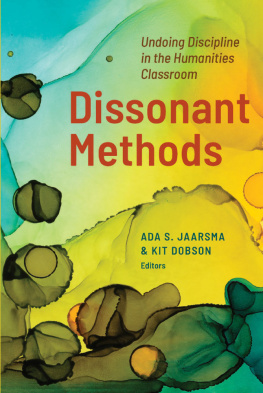
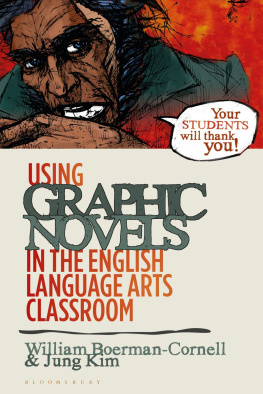



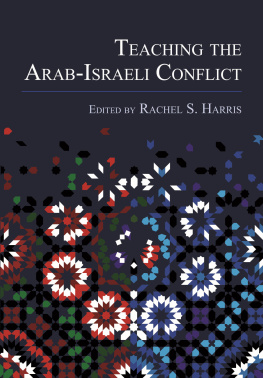
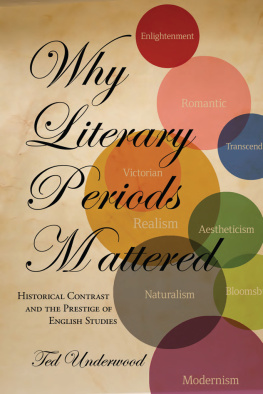
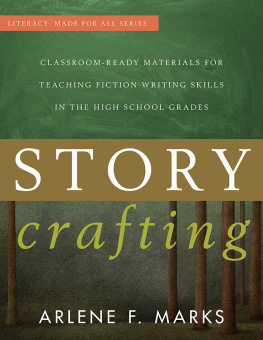

 This paper meets the requirements of ANSI / NISO Z39.48-1992 (Permanence of Paper).
This paper meets the requirements of ANSI / NISO Z39.48-1992 (Permanence of Paper).